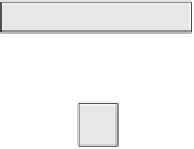Cryptography Reference
In-Depth Information
ciphertext block (which in turn depends on the previous plaintext block, the key
and the ciphertext block before that, etc.). In other words, the ciphertext block
depends on the current plaintext block and all those that came before it. In this
sense it really is message dependent. Unlike in ECB mode, when using the same
key in CFB mode it should not be the case that the same plaintext block is always
encrypted to the same ciphertext block because:
• each time a particular plaintext block needs to be encrypted, unless the whole
plaintext message that precedes it is the same as on some previous occasion,
the resulting ciphertext block should be different;
• even if the whole plaintext message that precedes a particular plaintext block is
the same, by choosing a different IV on each occasion, we should get a different
ciphertext block.
DECRYPTION USING CFB MODE
Decryption using CFB mode is very similar to encryption and is illustrated in
Figure 4.9. The CFB decryption process is:
1. Start by placing the agreed IV in the top register.
2. Encrypt the contents of the top register with the key and place the result in the
bottom register. The bottom register now contains exactly the same value as
the sender had in their bottom register when they generated the first ciphertext
block.
1
E
K
4
2
3
⊕
P
C
Receiver
Figure 4.9.
Decryption using CFB mode


































